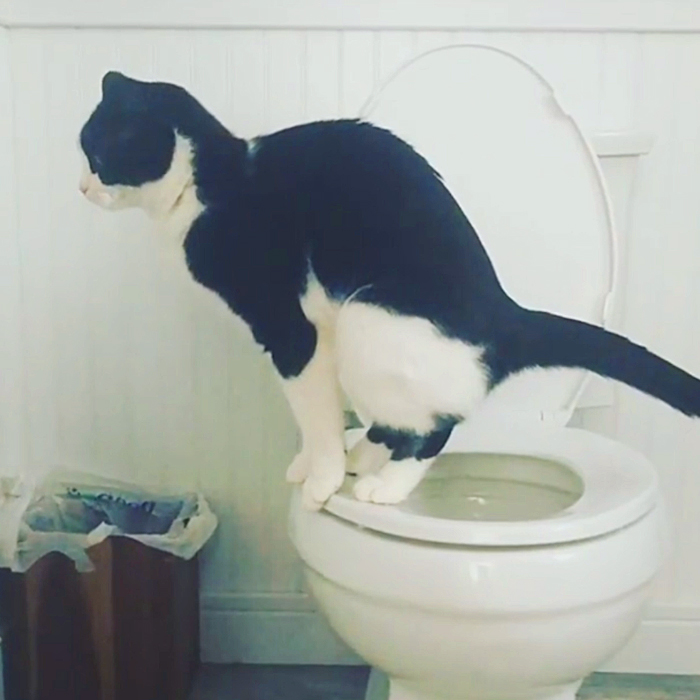Prevent Clogs and Damage: Don't Flush Cat Poop Down Your Toilet - Professional Recommendations
Prevent Clogs and Damage: Don't Flush Cat Poop Down Your Toilet - Professional Recommendations
Blog Article
Nearly everybody seems to have his or her own idea when it comes to Can You Flush Cat Poo or Litter Down the Toilet?.

Intro
As pet cat proprietors, it's vital to be mindful of how we deal with our feline buddies' waste. While it may appear practical to flush feline poop down the bathroom, this method can have harmful repercussions for both the atmosphere and human health.
Alternatives to Flushing
Luckily, there are much safer and more responsible ways to throw away feline poop. Consider the complying with choices:
1. Scoop and Dispose in Trash
The most common method of dealing with cat poop is to scoop it into a biodegradable bag and throw it in the trash. Make sure to use a specialized litter scoop and deal with the waste quickly.
2. Use Biodegradable Litter
Choose eco-friendly pet cat trash made from products such as corn or wheat. These trashes are environmentally friendly and can be securely taken care of in the trash.
3. Bury in the Yard
If you have a yard, take into consideration burying feline waste in a designated area far from veggie yards and water resources. Make sure to dig deep sufficient to stop contamination of groundwater.
4. Set Up a Pet Waste Disposal System
Invest in a pet dog waste disposal system especially developed for pet cat waste. These systems make use of enzymes to break down the waste, decreasing odor and environmental impact.
Wellness Risks
Along with ecological issues, purging pet cat waste can additionally pose health threats to people. Feline feces might contain Toxoplasma gondii, a parasite that can trigger toxoplasmosis-- a possibly extreme health problem, particularly for expecting females and people with weakened body immune systems.
Environmental Impact
Flushing pet cat poop introduces damaging virus and parasites into the supply of water, posturing a significant danger to water ecosystems. These impurities can negatively affect aquatic life and concession water top quality.
Verdict
Accountable animal ownership expands beyond supplying food and sanctuary-- it additionally involves correct waste monitoring. By refraining from flushing cat poop down the toilet and choosing different disposal approaches, we can lessen our ecological footprint and safeguard human health.
Why Can’t I Flush Cat Poop?
It Spreads a Parasite
Cats are frequently infected with a parasite called toxoplasma gondii. The parasite causes an infection called toxoplasmosis. It is usually harmless to cats. The parasite only uses cat poop as a host for its eggs. Otherwise, the cat’s immune system usually keeps the infection at low enough levels to maintain its own health. But it does not stop the develop of eggs. These eggs are tiny and surprisingly tough. They may survive for a year before they begin to grow. But that’s the problem.
Our wastewater system is not designed to deal with toxoplasmosis eggs. Instead, most eggs will flush from your toilet into sewers and wastewater management plants. After the sewage is treated for many other harmful things in it, it is typically released into local rivers, lakes, or oceans. Here, the toxoplasmosis eggs can find new hosts, including starfish, crabs, otters, and many other wildlife. For many, this is a significant risk to their health. Toxoplasmosis can also end up infecting water sources that are important for agriculture, which means our deer, pigs, and sheep can get infected too.
Is There Risk to Humans?
There can be a risk to human life from flushing cat poop down the toilet. If you do so, the parasites from your cat’s poop can end up in shellfish, game animals, or livestock. If this meat is then served raw or undercooked, the people who eat it can get sick.
In fact, according to the CDC, 40 million people in the United States are infected with toxoplasma gondii. They get it from exposure to infected seafood, or from some kind of cat poop contamination, like drinking from a stream that is contaminated or touching anything that has come into contact with cat poop. That includes just cleaning a cat litter box.
Most people who get infected with these parasites will not develop any symptoms. However, for pregnant women or for those with compromised immune systems, the parasite can cause severe health problems.
How to Handle Cat Poop
The best way to handle cat poop is actually to clean the box more often. The eggs that the parasite sheds will not become active until one to five days after the cat poops. That means that if you clean daily, you’re much less likely to come into direct contact with infectious eggs.
That said, always dispose of cat poop in the garbage and not down the toilet. Wash your hands before and after you clean the litter box, and bring the bag of poop right outside to your garbage bins.
https://trenchlesssolutionsusa.com/why-cant-i-flush-cat-poop/

Hopefully you enjoyed reading our post about Don’t flush cat feces down the toilet. Many thanks for taking time to read our blog. Do you know another individual who is enthusiastic about the niche? Do not hesitate to share it. I recognize the value of reading our article about How to Dispose of Cat Poop and Litter Without Plastic Bags.
Book Now Report this page